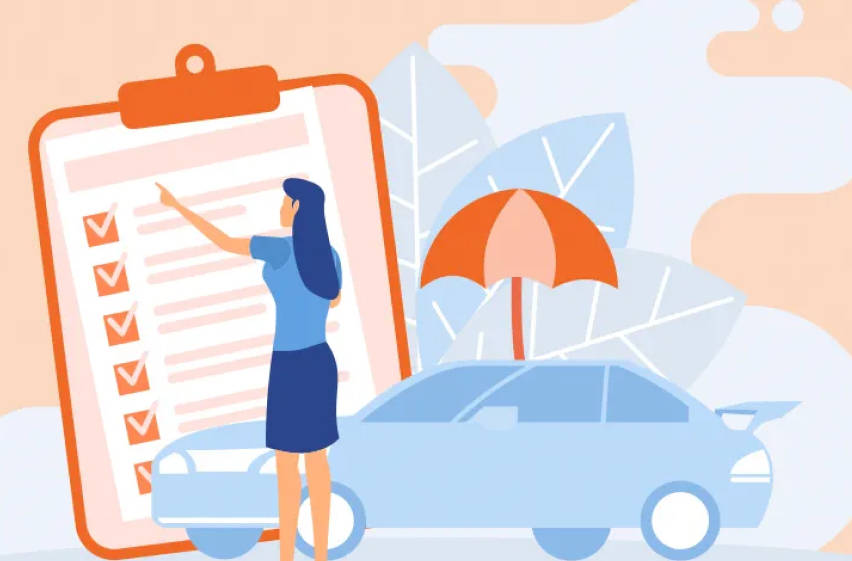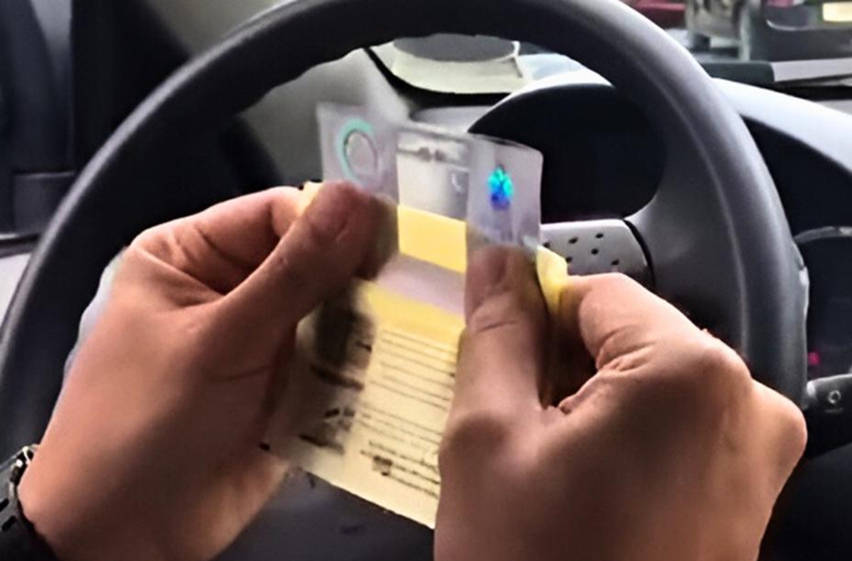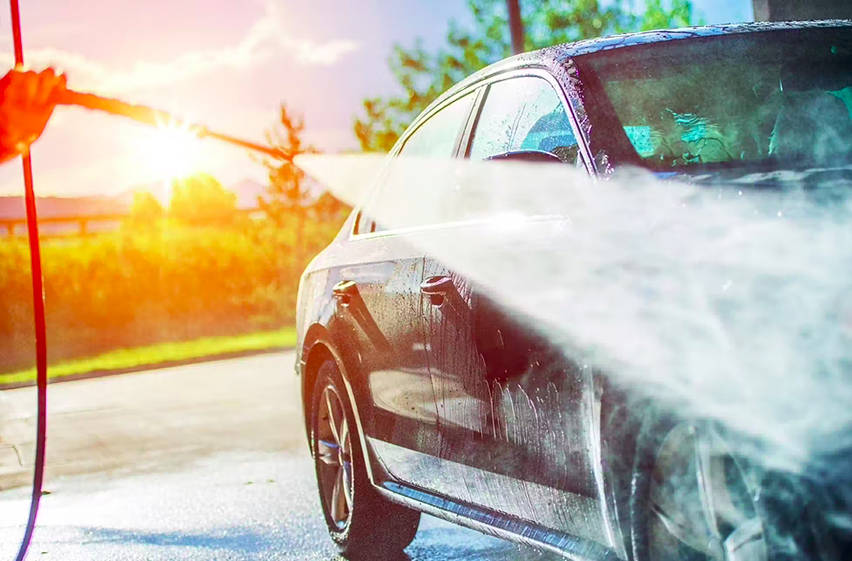Top 5 things you must do after buying a new car in the Philippines

Getting home a new car, too, for the first time is a pretty exciting feeling. The fun, the joy, the happiness in the eyes of friends and family members is priceless. As for the owner, the new car brings a feeling of contentment, now they have a personal vehicle that’ll free them from the daily stresses of taking public transportation.
KEY TAKEAWAYS
Where can I check my LTO violations?
You can check your LTO violations online at the LTMS (Land Transport Management System) portal.How can I pay for my LTO violations?
A driver can settle his/her LTO violations in two ways - offline at any LTO branch or satellite office or online via the LTMS portal.What is the fine imposed for the violation of the Number Coding Scheme?
If you are caught violating the number coding scheme by the authority, you will be fined between PHP 300 and PHP 500. This fine can be paid by several channels, including - GrabPay, GCash, Maya, Landbank Link Biz Portal, Bayad Center, SM Bills Payment, and MMDA Traffic Management Division.What if I am caught driving without the Certificate of Registration (CR)?
If you are caught driving without a CR by the authorities, you will be fined, and your car can be impounded.Can I go to jail for driving an uninsured car?
No, however, driving an uninsured car, you are putting yourself at great risk. Not only may you end up paying fines and losing vehicle registration, but getting involved in an accident with such a car accounts for legal proceedings.Tell us if we are wrong or exaggerating. However, it’s not just about enjoying the new car and the freedom it brings along; remember, there are responsibilities to meet as well. Shocked? Wondering what we are talking about? Sorry to break your bubble, but it’s true that for a smooth and hassle-free driving experience, you, as a car owner, need to check certain boxes immediately after buying the car.
In this article, we focus on the things a car owner should do after buying a car in the Philippines and offer some bonus tips.
So, without any delay, let’s get started.
5 Things to do after buying a new car
1. Get your car REGISTERED
Until and unless your car is registered with the Land Transportation Office (LTO), it is not supposed to be taken out on the open road.
By the dealer -
In the Philippines, when a car is purchased, the car dealership offers a free three-year vehicle registration with no added cost. After three years, it is the responsibility of the car owner to renew the car registration.
Also Read: Understanding 3-year LTO registration in detail.
Did you know that LTO empowers customers to monitor car registrations processed by dealers? In case of delay, the matter can be reported to the authorities. Also, the dealers are mandated to display the processing time of vehicle registration to the customers.
Steps of vehicle registration by the dealer -
- The vehicle is purchased, and the owner submits the required documents to the seller.
- The dealer processes the requirements within two to three days.
- The sale and initial registration process is reported in one to two days.
- The vehicle gets registered with the LTO, which then releases the Certificate of Registration (CR) and license plate
- The car owner is called upon by the dealer to collect the vehicle’s license plate and OR/CR.
By the car owner -
On the off chance that the car owner is required to register the car, he/she is required to follow the below-mentioned steps. Check out detailed guidelines on car registration in the Philippines here.
- Prepare the required documents (original sales invoice, original insurance certificate of cover, TIN ID, Original certificate of stock reported, and original PNP-HPG MV clearance certificate)
- Visit the LTO branch that processes car registration
- Submit all the documents
- Submit the Motor Vehicle Inspection Report (MVIR)
- Pay car registration fees
- Collect the CR, plates, stickers, and other documents
Also Read: Common mistakes to avoid when renewing your OR/CR in the Philippines.
2. Get your car INSURED
Car insurance is a legal requirement in the Philippines; further, it safeguards the owner from financial responsibility in case of an accident or mishappening.
Also Read: No car insurance? Here’s what all wrong can happen in the Philippines
All the cars in the country need to have Compulsory Third Party Liability (CTPL) insurance, even before car registration, where insurance certificate cover is a prime requirement. However, there’s a catch: CTPL only covers damages caused to third parties, and therefore, for added protection, car owners are recommended to get Comprehensive car insurance.
 Photo from BOB
Photo from BOBTypes of car insurance
- CTPL Insurance: As mentioned, it is an LTO requirement for car registration and covers the following financial responsibilities associated with third-party/victim bodily injuries, permanent disability, and/or death. It does not cover the insured car and its owner.
- Comprehensive Insurance: It is an all-inclusive insurance that is not mandatory but highly recommended. It covers the insured car, car owner, and passengers from accidents and other road-related risks.
Car insurance buying options
There are three options from which a car buyer in the Philippines can buy car insurance; this includes - Banks, auto dealerships, and online brokerage companies.
Also Read: Top car insurance picks in the Philippines; know which one is right for you
Note that after acquiring a car insurance policy, you need to sort a few things to make sure the policy proves useful when the need arises. Check what to do after getting car insurance here.
3. Get an RFID sticker
 Photo from yoorekka
Photo from yoorekkaAfter sorting out your car registration, it is time for you to get an RFID sticker. It comes in handy while making toll payments, parking access, and tracking. There are two types of RFID stickers - Easytrip and Autosweep, each useful in different sets of highways. The table below gives a rough idea of the RFID stickers and their highway usage -
|
Easytrip |
Autosweep |
|
NLEX |
MCX |
|
SCTEX |
NAIAX |
|
CAVITEX |
TPLEX |
|
C5 Link |
SLEX |
|
CALAX |
Few LTO guidelines regarding RFID stickers
- RFID stickers must be registered under the vehicle owner’s name.
- Correct installation of RFID sticker as per tollway operator’s guidelines.
- Maintain adequate RFIB balance to cover toll charges.
- Comply with tollway operators' speed guidelines when passing through RFIS-enabled toll lanes.
- Comply with tollway operator's guidelines regarding the maximum number of RFID stickers per vehicle.
4.Get to know the traffic rules & regulations
Every driver in the Philippines needs to familiarize themselves with the traffic rules and regulations. It does not matter if you are a new or seasoned driver, staying updated on the matter keeps the road safe and helps avoid fines & accidents.
Here is the list of traffic rules and regulations every Filipino driver must be familiar with -
- Number coding scheme: Metro Manila Development Authority (MMDA) enforces a number coding scheme to reduce the influx of traffic in Metro Manila. The scheme restricts the movement of cars based on the last digit of the vehicle's number plate and the weekday. The table below shows the number coding scheme for 2025 -
|
The last digit of the license plate |
Prohibited to drive the car |
|
1 and 2 |
Monday |
|
3 and 4 |
Tuesday |
|
5 and 6 |
Wednesday |
|
7 and 8 |
Thursday |
|
9 and 0 |
Friday |
- Traffic signs & symbols: A driver needs to understand the traffic signs and symbols. These visual markings found on the side of the road provide drivers and pedestrians with directions, warnings, and instructions. In the Philippines, traffic signs and symbols are divided into eight categories, check them all out here.
- Seat belt law: Every driver and passenger in the Philippines must adhere to the Republic Act (RA) 8750, i.e., the “Seat Belts Use Act of 1999”. This act mandates the use of seat belts by drivers and passengers and also mandates the vehicle manufacturers to install seat belts in all new vehicles. Check out the key provisions and exemptions of the act here. The table below shows the penalties for not complying with the seat belt law -
|
First Offense |
PHP 1000 |
|
Second Offense |
PHP 2,000 |
|
Third & subsequent Offense |
PHP 5,000 & one-week suspension of the driver’s license |
- Other necessary driving rules: A driver must be aware of rules and regulations concerning speed limit, no parking zones, and driving-related violations like driving under the influence, etc.
Also Read: Check out all the violations, penalties, and fines a driver may face in the Philippines
5. Get to know the car’s service and maintenance schedule
If you want to ensure your car’s longevity and crisp performance for long, then make sure to keep up with its service schedule. As a new car owner, it is your responsibility to follow the manufacturer’s recommended maintenance requirements. You can find this ‘schedule’ either in the car’s service booklet or the manual.
 Photo from capitalone
Photo from capitaloneHere’s a basic car maintenance checklist to follow (after the scheduled services)
- Regular oil change
- Battery check
- Tyre pressure check
- Air filter cleaning
- Brake inspection
- Regular car wash and waxing
Did you know that some car brands, like Hyundai, Mazda, Mitsubishi, Honda, and Toyota, in the Philippines offer free or discounted Preventive Maintenance Services (PMS) to customers? Make sure to ask about it and take advantage.
A few other inclusions
- Get your vehicle-related documents photocopied - The OR/CR are two important documents for a vehicle owner. While the originals must be kept safe, in a secure place, unfolded. But before that, get them photocopied as they are essential for identification purposes.
- Go through the car owner's manual - It is a good idea to know your car, and going through the owner’s manual is a good place to start. While it’s not necessary to go through every page, do go through the key information.
- Test the car’s settings and features - After getting your new car home, take some time out to check its features and settings. Familiarize yourself with all the features and their working, and adjust the seat to your comfort. Do all this while the car is parked.
- Add personal details - While it is not necessary, personalizing your car will make it more comforting, especially on those long stretches of road trips or while you are stuck in traffic for hours. A few suggestions are - an air freshener, floor mats, phone charger, emergency kit, first-aid kit, etc.
Bottom line
Owning a car is great, but it brings along significant responsibilities. A driver is required to fulfill all the requirements at the latest to ensure a hassle-free experience. The list includes - vehicle registration with the LTO, getting car insurance, learning about LTO traffic rules, regulations, and violations, and vehicle maintenance. The benefit? By doing so, you’ll end up with no legal issues, unnecessary expenses, and a well-maintained car, therefore immense peace of mind.
Also Read: New year, same ride: Fresh car care habits for 2025
Featured Articles
- Latest
- Popular
Recommended Articles For You
Featured Cars
- Latest
- Upcoming
- Popular
Car Articles From Zigwheels
- News
- Article Feature
- Advisory Stories
- Road Test
